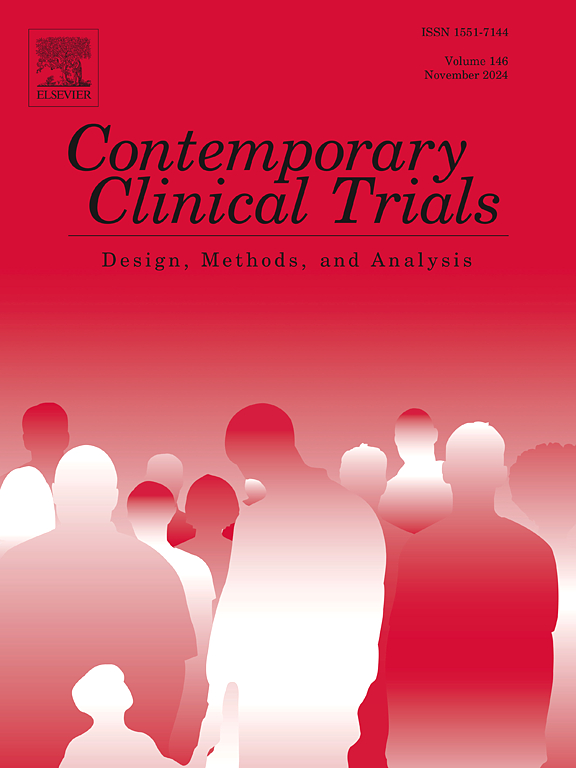急诊科诊断不确定性(TECU)的基于ehr的针对性沟通:有效性实施试验的方案
IF 2
3区 医学
Q3 MEDICINE, RESEARCH & EXPERIMENTAL
引用次数: 0
摘要
背景:至少37%的急诊科(ED)患者在没有明确诊断的情况下出院,导致诊断的不确定性。对于患者安全而言,转诊是高危期,特别是对于诊断不确定出院的患者。临床医生和患者之间的有效沟通可以改善这些护理转变。先前的研究开发了一些工具,以支持在诊断不确定的情况下高质量的出院,包括:沟通清单、医生培训计划和面向患者的信息表。方法本研究旨在通过基于电子健康记录(EHR)的策略,促进诊断不确定的患者离开急诊科的过渡。干预措施,即基于ehr的不确定性沟通策略,将不确定性沟通清单和不确定性出院文件的使用集成到日常急诊室出院工作流程中。该检查表有助于临床医生解决诊断不确定出院的急诊科患者主要关注的问题。以患者为中心的出院文件向患者解释了诊断不确定性的概念。与300名参与者的标准护理相比,前后试验旨在测试干预措施在减少患者不确定性和急诊回访方面的有效性。它还旨在评估干预措施的采用和实施障碍和促进因素。该试验建立在先前研究的基础上,旨在建立一种沟通策略,为患者提供必要的信息,以便在诊断不确定的情况下安全过渡。以电子病历为基础的策略旨在使沟通标准化,并尽量减少偏见和差异。研究结果将被传播,为未来的试验提供信息,并提高对诊断不确定性患者经历的理解。试验注册该试验于2024年10月9日在ClinicalTrials.gov (# NCT06638021)前瞻性注册。本文章由计算机程序翻译,如有差异,请以英文原文为准。
Targeted EHR-based communication of diagnostic uncertainty (TECU) in the emergency department: Protocol for an effectiveness implementation trial
Background
At least 37 % emergency department (ED) patients are discharged without a definitive diagnosis, resulting in diagnostic uncertainty. Transitions of care are high-risk periods for patient safety, especially for patients discharged with diagnostic uncertainty. Effective communication between clinicians and patients improves these care transitions. Previous research developed tools to support high quality discharge in the setting of diagnostic uncertainty, including: a communication checklist, a physician training program, and a patient-facing information sheet.
Methods
This study aims to enhance transitions for patients leaving the ED with diagnostic uncertainty through an electronic health record (EHR)-based strategy. The intervention, the Targeted EHR-based Communication about Uncertainty strategy, integrates use of an Uncertainty Communication Checklist and an Uncertainty Discharge Document into routine ED discharge workflows. The checklist aids clinicians in addressing topics of chief concern for ED patients discharged with diagnostic uncertainty. The patient-centered discharge document explains the concept of diagnostic uncertainty to patients. The pre-post trial seeks to test the intervention's effectiveness in reducing patient uncertainty and return ED visits compared to standard of care with 300 participants. It also aims to evaluate the intervention's adoption and implementation barriers and facilitators.
Discussion
This trial builds on previous research to establish a communication strategy that equips patients with essential information for safe transitions amidst diagnostic uncertainty. The EHR-based strategy seeks to standardize communication and minimize bias and variation. Findings will be disseminated, to inform future trials and improve understanding of patient experiences with diagnostic uncertainty.
Trial registration
This trial was prospectively registered on 10/9/2024 with ClinicalTrials.gov (# NCT06638021).
求助全文
通过发布文献求助,成功后即可免费获取论文全文。
去求助
来源期刊
CiteScore
3.70
自引率
4.50%
发文量
281
审稿时长
44 days
期刊介绍:
Contemporary Clinical Trials is an international peer reviewed journal that publishes manuscripts pertaining to all aspects of clinical trials, including, but not limited to, design, conduct, analysis, regulation and ethics. Manuscripts submitted should appeal to a readership drawn from disciplines including medicine, biostatistics, epidemiology, computer science, management science, behavioural science, pharmaceutical science, and bioethics. Full-length papers and short communications not exceeding 1,500 words, as well as systemic reviews of clinical trials and methodologies will be published. Perspectives/commentaries on current issues and the impact of clinical trials on the practice of medicine and health policy are also welcome.

 求助内容:
求助内容: 应助结果提醒方式:
应助结果提醒方式:


